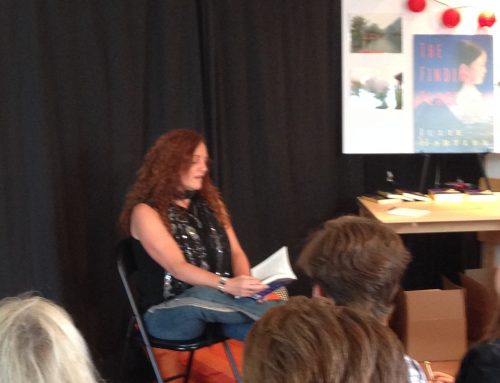A couple weeks back, at the Arts Academy, one of my teenage writers brought in homework assigned by his Writer’s Craft teacher. It’s so boring, he told me. I asked what he had to do. His homework involved finding as many alternative ways as possible of saying ‘he said’ and ‘she said’, and coming up with creative adverbs to go alongside his chosen words. My writing student had a list, so far, that included such things as:
he retorted vociferously
she cried miserably
he howled horrendously
she whispered quietly
Now, this Grade 11 student is a fabulous writer so I said, “You realise they all sound awful, right? Adverbs should be avoided – write well enough and you won’t need them. And he said/she said is always preferable because they act as almost-invisible pointers to the reader.”
My student sighed. “I know all that,” he said, “But my teacher doesn’t. That’s why we have to do this.”
It was a coincidence that the same evening, a relative’s young daughter brought home a poem she was writing in school. She had launched into the poem with enthusiasm – but now she was overwhelmed and confused. Several lines in her poem had been slashed through with red pen by her teacher, and alternative lines written in their place. The child’s poem was about a man forced to go off to fight a war, when all he wanted to do was stay with the family he loved. She’s ten – and was no doubt thinking how her own dad might feel if he had to leave his family. In many cases, the teacher’s creative choices were no better or worse than hers, and I had trouble, as a writer, figuring out why the student’s lines had been replaced by others. This felt like the teacher imposing her ideas on someone else’s poem, and failing to respect any creative vision the student may have had.
One correction, in particular, bothered me. The child had written: “On the battlefield, the father fights for his life.” The line was crossed out and replaced with: “On the battlefield, the father fights for his country.” This felt like a political statement: an imposing of a patriotic sentiment on a student who chose, instead, to empathise with the feelings of a father missing his family, and wanting to stay alive so he could see them again. The teacher certainly hadn’t taken the time to absorb what it was this young poet was trying to say.
So what is the role of a teacher, when it comes to teaching poetry? In my view, striking out lines and replacing them with alternatives is no different from scribbling over a student’s art work with a black marker, striking out images they have chosen to create. Poems are creative pieces, and need to be respected as such. Certainly a teacher can help student-poets to improve their craft – but by encouraging them to question the choices they have made, and asking whether those choices fit the creative vision they had in mind. And also by taking the time to ask what it was the student was trying to say, in the first place.
Several other lines in this poem were also crossed out. The student explained that one line contained direct speech, which wasn’t allowed in poems. Another line was too long – all lines in a poem were supposed to be about the same length, her teacher had said – five or six words being ideal. All lines in the poem were supposed to be justified to the left, as well, and should begin with an upper case letter. I was horrified to think that children were being taught like this. Together, we pulled poetry collections off my bookshelves. We looked at poems with lines of one word, and twenty. Prose poems, and shape poems. We found poems with direct speech, poems written in word fragments scattered across a page, and poems in which lines definitely did not begin with upper case letters.
What did the young poet take away from this experience? She insisted on handing in the poem with all required ‘corrections’ because she was scared that her teacher would be angry, otherwise. But she hated this final version, because it wasn’t her poem any more, it was her teacher’s, and she threw her own copy away. She told me she never wanted to write poetry again. I wrote a long letter to the teacher, explaining what had happened, and suggesting alternate ways she might try encouraging creativity in her students – not to mention respecting their freedom of opinion.
Over the weekend, I sat down with this student and encouraged her to revisit her poem. I handed her a red marker and asked her to carefully consider the teacher’s alterations, one by one. If she didn’t agree with them, I told her to cross them out. She returned to her original word choice, or – in many cases – found even better ones. Within minutes, she was writing furiously, inspired to re-create a poem that was hers and hers alone.
When she was done, she had a piece she was truly proud of. And she’s emailed it out to all members of her family, so that everyone can share it.
That’s what creativity is really about.
